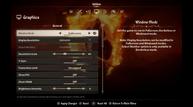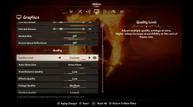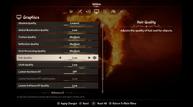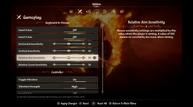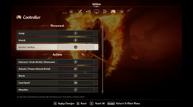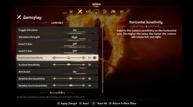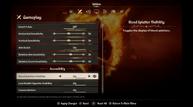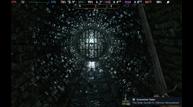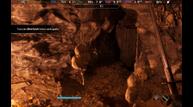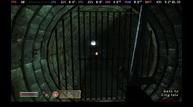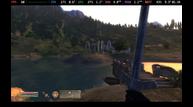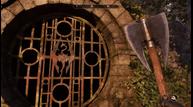
The Elder Scrolls IV: Oblivion Remastered Steam Deck Impressions – Recommended Settings, Performance, and More
Bethesda Softworks and Virtuos announced and released The Elder Scrolls IV: Oblivion Remastered, a full remaster of the 2006 RPG classic, across Steam, PlayStation 5, and Xbox Series X|S earlier this week. Following the original tease from Bethesda for this reveal event, I started playing the original release of Oblivion on my Steam Deck to get back into the groove before playing the new remaster and see how it scales across not only handhelds on Steam, but also Xbox Series X through the Game Pass version. Despite being Steam Deck Verified, The Elder Scrolls IV: Oblivion Remastered has issues on not just Steam Deck, but also PC in general. Instead of just covering The Elder Scrolls IV: Oblivion Remastered with Steam Deck recommended settings, I have also covered how The Elder Scrolls IV: Oblivion Game of the Year Edition feels on Steam Deck today.
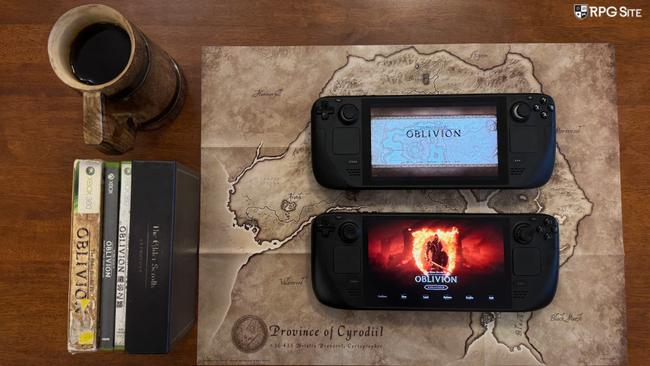
The Elder Scrolls IV: Oblivion Remastered PC port features
The Elder Scrolls IV: Oblivion Remastered features many graphics and display options including modern upscaling. Before getting into the options, I recommend making major graphics setting changes only at the title screen and not in-game if you can. It seems like there is a bug where some settings may not save or performance degrades when you change settings often while in-game.
Under the graphics menu, you can adjust window mode (fullscreen, borderless, windowed), display resolution (16:10 and 800p support included on Steam Deck), resolution scale (I'll come to this later), toggle v-sync, frame rate limit (30, 60, 120, uncapped), display fps in-game, display VRAM usage in-game, adjust brightness, adjust FOV for both first and third person, toggle motion blur, and toggle screen space reflections.
Under the quality settings in the graphics menu, you can adjust the overall quality level, let the game auto-detect settings for your hardware, and then adjust the following across lowest, low, medium, high, and ultra: view distance, effects, foliage quality, shadow quality, global illumination quality, texture quality, reflection quality, post-processing quality, hair quality, and cloth quality.
You can also toggle Lumen hardware ray tracing, adjust the mode for Lumen hardware ray tracing, and adjust the quality for Lumen software ray tracing. Beyond those options, there's an Advanced menu that has all the upscaling and frame generation options. One thing to note here is if you enable FSR, XeSS, or DLSS, the anti-aliasing option is greyed out and this also disables the resolution scale slider I mentioned earlier.
The Elder Scrolls IV: Oblivion Remastered Steam Deck performance
The Elder Scrolls IV: Oblivion Remastered is an Unreal Engine 5 release and is very demanding. This week has already seen Clair Obscur: Expedition 33 using the same engine release, and it isn't amazing on Steam Deck, but it is very playable after cutbacks. The Elder Scrolls IV: Oblivion Remastered is Steam Deck Verified, but it runs quite poorly in the open world. I wonder if the Steam Deck Verified rating was actually just given based on the opening thirty minutes of play when you're indoors more or less. In those sections, the game ran fine on Steam Deck using the low preset and the default settings.
After finishing that tutorial section and reaching the open world, things fell apart quickly. The Elder Scrolls IV: Oblivion Remastered is full of constant stuttering on Steam Deck. Even if you set everything to the absolute lowest possible option and run at 800p, it doesn't feel smooth in the open world. I was able to tweak the settings enough to make the experience tolerable, but given the dramatic visual cutbacks, I wouldn't really recommend The Elder Scrolls IV: Oblivion Remastered on Steam Deck right now. Things can improve though in updates.
One more thing I want to note is the freezing and the texture issues that happen when you fast travel. I ran into situations where it felt like my Steam Deck had frozen during fast travel, but it just took 30 seconds more to load everything when I reached the new location. This basically felt like the game had transported me to my destination, but the NPCs and textures were slowly loading in front of me. Another issue is that some textures in the environment don't load quickly enough. This is with the game installed on my Steam Deck's internal SSD.
The Elder Scrolls IV: Oblivion Remastered Steam Deck recommended settings
My recommendation is not playing The Elder Scrolls IV: Oblivion Remastered on Steam Deck right now because of the inconsistent performance regardless of the settings on both LCD and OLED models. Even when using 30 percent render scale and TSR with the lowest settings on my Steam Deck OLED, it doesn't feel smooth in the open world.
If you're ok with an inconsistent frame rate throughout and still want to play only on Steam Deck, I recommend using TSR (make sure to turn off anti-aliasing so TSR is visible) and a 40% resolution scale with a combination of low and medium settings. These make it so the game still looks decent on the small screen while running around 30fps. The stuttering even happens when you leave the game idle and have the camera pan around your character.
As for the quality settings, I used a combination of low and medium settings. I did this because performance wasn't much better when using the lowest settings and using those results in a much worse overall image. In fact, you will need to get used to the low draw distance for playing at 30fps and above.
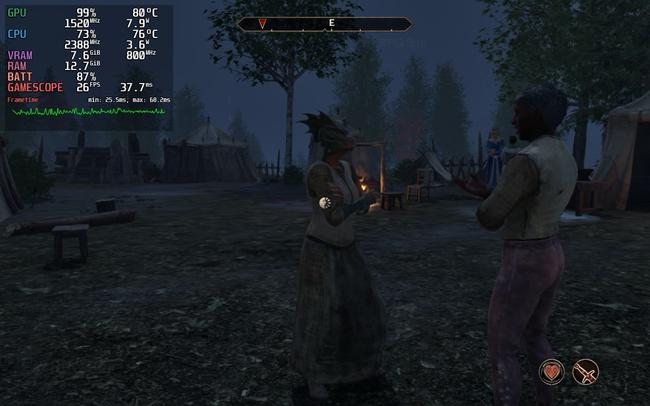
When testing out FSR and XeSS, even when using the lowest possible settings for both upscaling options, the open world performance would fluctuate heavily even seeing 20fps drops just running around. I tested out the High preset and turned shadows down and while it ran at 30fps or above in the city, the regular performance issues in the open world across all presets are not good.
As of today, you can get The Elder Scrolls IV: Oblivion Remastered to look very good on Steam Deck with a combination of low to even some high settings, but the inconsistent performance in the open world even at the absolute lowest settings really dampens the experience.
Like I said before, I don't recommend playing it on Steam Deck right now. If you are able to stream it from your more powerful PC to Steam Deck, that is likely the best way to experience the game on Valve's handheld in its current state. I don't see how this game deserves the Steam Deck Verified rating given the performance.
One last thing I want to mention is that I did try frame generation and it felt awful. If you aren't able to hit a locked 30fps or higher, frame generation is absolutely not worth using on Steam Deck.
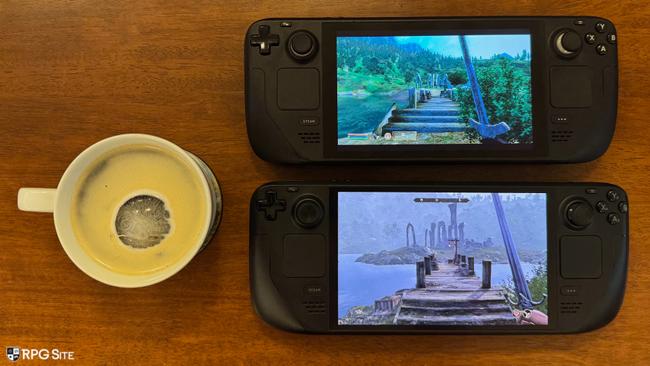
The Elder Scrolls IV: Oblivion Remastered vs The Elder Scrolls IV: Oblivion GOTY Edition on Steam Deck
Given the current state of The Elder Scrolls IV: Oblivion Remastered on Steam Deck, I'd honestly recommend playing The Elder Scrolls IV: Oblivion GOTY Edition if you really want to play Oblivion on a portable. It unfortunately requires a bit of extra work by downloading a community controller layout, but once you do that and get used to the custom controls, it feels excellent on Valve's handheld.
Not only does it run flawlessly, but it looks crisp (albeit dated) and gives you tons of battery life regardless of playing on an LCD or OLED Steam Deck. I've actually been playing The Elder Scrolls IV: Oblivion GOTY Edition on my Steam Deck LCD and it holds 60fps perfectly. The controller layout I used even had gyro and a radial menu setup. You can try out any of the top controller layouts to find one you like.
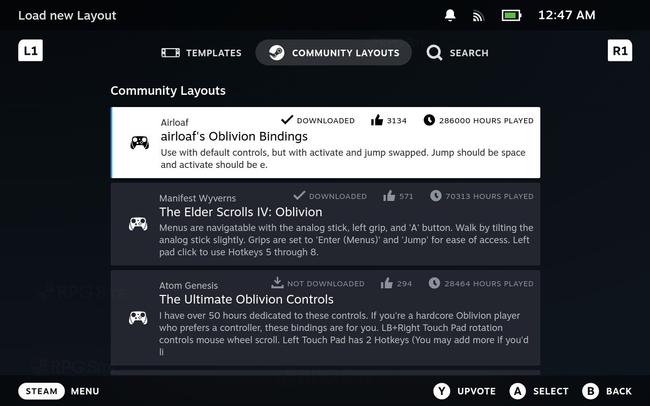
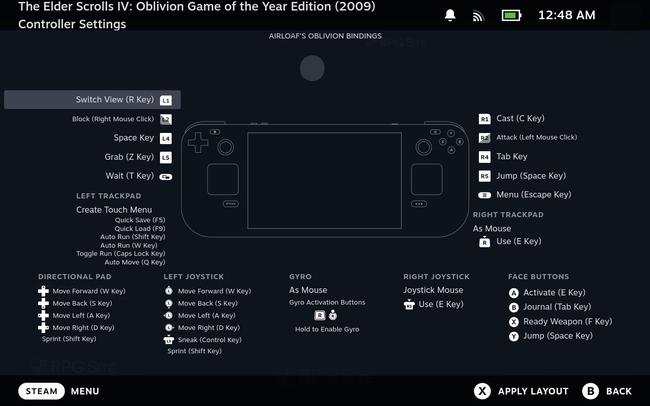
As for comparing both games on other devices, my most played version of Oblivion before this week is the Xbox 360 version on my Xbox Series X. While I enjoyed it, I like the remaster more in almost every way. When considering what to recommend for handheld play, ideally I'd just be able to say go play The Elder Scrolls IV: Oblivion Remastered, but it doesn't run well. Right now, The Elder Scrolls IV: Oblivion Game of the Year Edition is the best version to play on a handheld natively.
The Elder Scrolls IV: Oblivion Remastered ROG Ally impressions
When you try to launch The Elder Scrolls IV: Oblivion Remastered on ROG Ally (the Z1 Extreme model) for the first time, you are prompted with a warning that says the system does not meet the minimum requirements to play the game because the video memory needed is 6GB or more and the main memory needed is 16GB or more. I'm not sure if this warning is also present on the ROG Ally X, but you can safely ignore it and press ok to dismiss the window.
After getting in-game, the early impressions for The Elder Scrolls IV: Oblivion Remastered on ROG Ally using the 25W turbo mode were positive. I soon discovered that like Clair Obscur: Expedition 33, The Elder Scrolls IV: Oblivion Remastered on ROG Ally has regular hitching when exploring the open world. This is different from the issue present on Steam Deck.
In fact, The Elder Scrolls IV: Oblivion Remastered on ROG Ally in the 25W turbo mode using the exact same low settings as the Steam Deck version even at 720p feels worse than playing on Steam Deck with the hitching and freezing being more prominent. Despite the shader compilation when booting up the game for the first time, I am disappointed with how much hitching is present on ROG Ally right now regardless of the settings used.
When it comes to comparing the ROG Ally with the Steam Deck for The Elder Scrolls IV: Oblivion Remastered, the game can look a lot better on the former, but it has too much hitching in the open world regardless of the settings.
In its current state, there are big visual compromises needed to get The Elder Scrolls IV: Oblivion Remastered playable at an acceptable frame rate on Steam Deck, and even taking those into account, it has issues in the open world. I'd recommend waiting for patches right now to play on Steam Deck or playing it on a more powerful system like a PS5, Xbox Series X, or your main PC if you have those options available. Don't be fooled by how the game runs indoors or in less open areas. Until the game feels better in the open world on handhelds, I can't recommend getting it. I'm going to stick to playing more of it on Xbox Series X since I am enjoying the game quite a bit.
